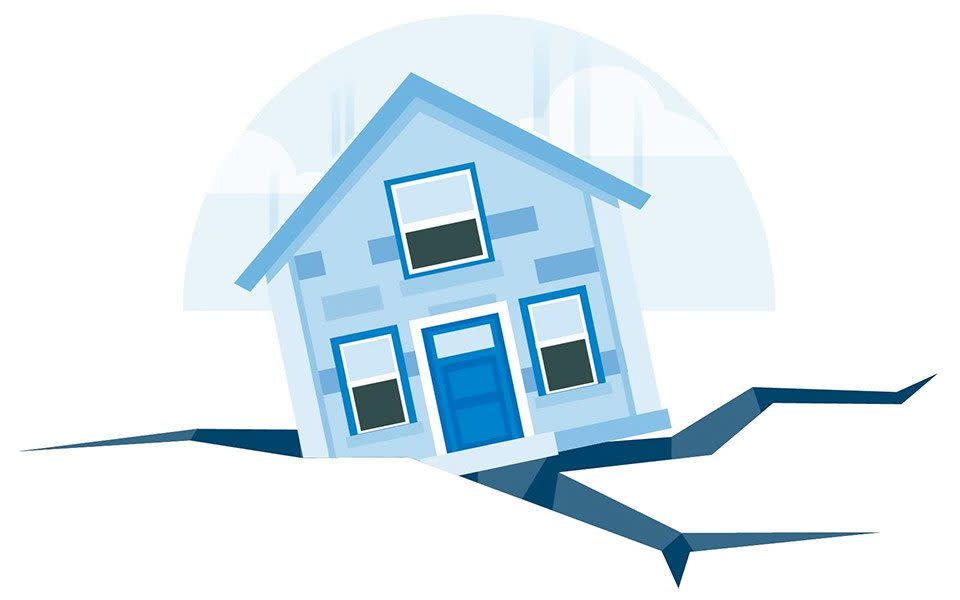‘We’ll lose £5,000 on just one of our buy-to-lets’: Landlords hit hard by Britain’s mortgage chaos

Landlords now face losing thousands of pounds a year as their fixed rate mortgages expire and they are pushed on to new rates that are more than double what they are used to.
Investors face a bleak choice between making enormous rent rises or selling up as high rates hammer their profit margins and mean buy-to-let properties are failing lenders’ stress tests to remortgage.
When Stephanie Johnson, a buy-to-let landlord near Bristol, comes to the end of one of her fixed-rate mortgages, her £930 per year profit on the property will become a £4,980 loss.
Mrs Johnson, who spoke using a different name, and her husband have built up a small portfolio of five buy-to-lets since 2009, when they started renovating local properties and letting them to families on housing benefit.
But interest rate rises mean their business model is now being turned upside down. Since the start of this year, the average rate on a two-year fixed-rate buy-to-let mortgage has more than doubled from 2.94pc to 6.34pc, according to Moneyfacts, a data company.
Rates have climbed so high that Mrs Johnson’s property will no longer be able to meet lenders’ affordability stress tests – which means in turn that she will be moved on to an even higher rate.
Her existing mortgage rate on the property is 3.76pc. But when the fixed rate expires in June, she will be moved to a standard variable rate. This is currently 7.85pc. This means that Mrs Johnson’s mortgage payments will jump by 106pc from £6,914 per year to £14,299.
Currently, Mrs Johnson makes a post-tax profit of £931 per year on the property. After her fixed-rate mortgage expires, she will be losing £4,977 per year. The blow has been amplified by the phasing out of tax relief on buy-to-let mortgages since 2017.
She said: “This affects our ability to pay our own mortgage and bills, and therefore is not sustainable. Sadly, I am now looking at the possibility of leaving the private rental sector altogether."
Mrs Johnson will be unable to remortgage the property because she will not be able to meet lenders’ stress test requirements. While residential loan sizes have maximum income multiples, buy-to-let mortgages are stress tested by an interest coverage ratio – a measure of how the rental income compares to a borrower’s interest payments.
For smaller landlords, the rent must total 125pc of interest payments. But landlords with larger portfolios, such as Mrs Johnson, have a higher ICR requirement of 145pc. This dramatically amplifies the impact of higher mortgage rates.
In order for the property to be mortgageable, Mrs Johnson would need to raise the rent by 25pc. But her tenant is on housing benefits, which have been frozen since 2020. “I do not see how this level of increase could be imposed on our tenants given their low income and the rising cost of living,” Mrs Johnson said.
Two of Mrs Johnson’s fixed-rate deals expire in June next year. The remaining three expire in January 2024. She has already served notice to one of her tenants. She said: “The financial and moral dilemma we find ourselves in is heart-breaking."
The Bank of England has warned that the remortgage crunch will hit the buy-to-let sector particularly hard because 85pc of outstanding buy-to-let mortgages are interest-only, which are subject to more stringent stress testing than repayment mortgages.
There is also a particular risk for landlords who had agreed a consent to let on their residential mortgages.
Chris Sykes, of mortgage broker Private Finance, said a couple who took out consent to let on their London flat when they moved abroad had a 75pc mortgage, but now after their two-year fix has expired, they can only get a buy-to-let mortgage if they have a smaller 60pc mortgage.
They do not have the cash to pay the difference and already have a tenant on an assured shorthold tenancy, so they can’t raise the rent. As a result, they have been moved on to SVR.
Their rate has more than tripled from 1.89pc to 6.49pc, meaning their monthly payments have increased by £1,000 to £2,420. The rent on the property is only £2,100 per month. Mr Sykes added: “They are going to have to pay the difference until they can sell it,." Until then, they will lose £300 per month.

 Yahoo News
Yahoo News 
